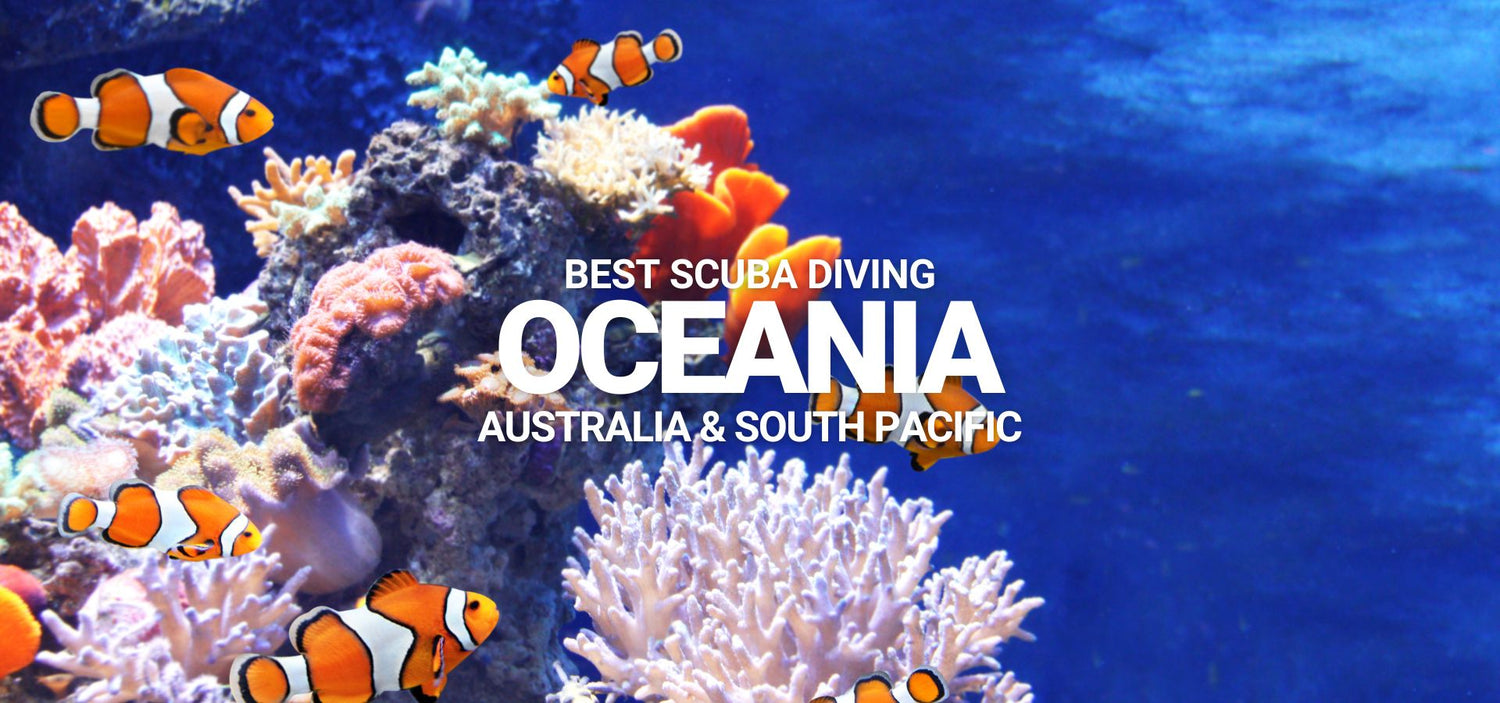Ever dreamed of diving where the ocean feels endless and every colour of blue seems invented for you? Welcome to Oceania and the South Pacific — the beating heart of the planet’s underwater paradise. This region holds the world’s most extraordinary mix of coral reefs, volcanic drop-offs, and tranquil lagoons. From the Great Barrier Reef to the far reaches of French Polynesia, every dive reveals another world of life, light, and pure connection to the sea.
5 Best Scuba Diving Sites in Oceania and the South Pacific
1. Great Barrier Reef, Australia – The Icon of the Ocean
No list of the world’s best dive destinations would be complete without the Great Barrier Reef. Stretching over 2,300 kilometres along Queensland’s coast, it’s the largest living structure on Earth. Divers drift through coral gardens brimming with clownfish, turtles, and reef sharks. Sites like Osprey Reef and Ribbon Reefs offer advanced dives with steep walls and pelagic visitors. Access is easy via Cairns, Townsville, or liveaboard trips from Port Douglas.
Best time to dive: June to November for clear visibility and calm seas.
2. Fiji – The Soft Coral Capital
Known as the “Soft Coral Capital of the World,” Fiji delivers an explosion of colour and life. Dive the Great White Wall in the Somosomo Strait, where lavender and snow-white corals cover the reef like a living tapestry. Mantas glide through channels, and reef sharks patrol the outer walls. The Fijian people’s warmth extends underwater too, with dive resorts catering to every level of experience.
Best time: May to October during the dry season.

3. Papua New Guinea – Remote and Remarkable
For divers seeking untouched adventure, Papua New Guinea (PNG) is the ultimate frontier. Its waters hold WWII wrecks, coral atolls, and immense biodiversity. The Kimbe Bay region alone boasts more than 400 coral species. Expect to encounter barracuda, pygmy seahorses, and everything in between. PNG is for those who crave discovery — wild, authentic, and full of wonder.
Best time: April to November for the best visibility.
4. Vanuatu – Wrecks and Volcanoes
The SS President Coolidge in Vanuatu is one of the most famous wreck dives in the world. Once a luxury liner, it sank during WWII and now rests fully intact on a gentle slope, making it ideal for exploration. Add to that caverns, tunnels, and active volcanic landscapes, and you’ve got an adventure both above and below the waterline.
Best time: May to October, when the seas are calmest.

5. French Polynesia – Sharks and Serenity
Few places blend luxury and wilderness like French Polynesia. The passes of Fakarava and Rangiroa are legendary for drift diving with hundreds of reef sharks. Schools of tuna, dolphins, and mantas move through water so clear it feels unreal. Bora Bora’s calm lagoons offer gentle dives for beginners — and world-class sunsets to match.
Best time: April to October for warm water and good visibility.


Why Scuba Dive Oceania and the South Pacific
From coral kingdoms to shipwreck sanctuaries, Oceania and the South Pacific are diving’s purest dreamscape — where every descent feels like a discovery.

When to Scuba Dive Oceania and the South Pacific
The best time to scuba dive Oceania and the South Pacific, water temperatures, and visibility:
- Fiji (Soft Coral Capital): May to October. Waters from 24°C / 75°F up to 27°C / 81°F and 15-50m vis (peak visibility in the cooler, dry season).
- Great Barrier Reef, Australia (Northern Section): May to October (Dry Season). Waters from 24°C / 75°F up to 27°C / 81°F and best visibility.Note: Water is warmest in the wet season (Dec-Apr), up to 29°C / 84°F, but visibility can be reduced by rain runoff.
- Palau (Micronesia): October to May (Dry Season). Waters from 27°C / 81°F up to 30°C / 86°F and 30-50m vis (Dry season has the most reliable conditions for pelagic action).
- French Polynesia (e.g., Tahiti, Rangiroa): April to November. Waters from 25°C / 77°F up to 28°C / 82°F and excellent visibility (30m+).
- Galapagos (Ecuador - Technically East Pacific): July to December (Cooler/Dry Season). Waters from 19°C / 66°F up to 24°C / 75°F and best time for whale sharks and marine iguanas.












